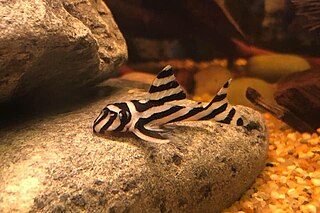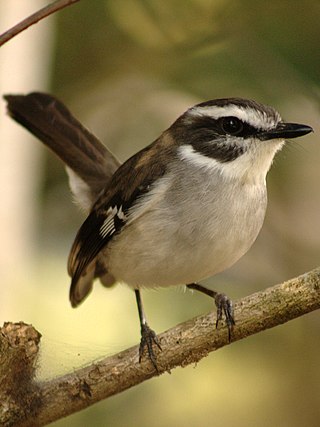
Equidae is the taxonomic family of horses and related animals, including the extant horses, asses, and zebras, and many other species known only from fossils. The family evolved around 50 million years ago from a small, multi-toed ungulate into larger, single-toed animals. All extant species are in the genus Equus, which originated in North America. Equidae belongs to the order Perissodactyla, which includes the extant tapirs and rhinoceros, and several extinct families.

The mountain zebra is a zebra species in the family Equidae, native to southwestern Africa. There are two subspecies, the Cape mountain zebra found in South Africa and Hartmann's mountain zebra found in south-western Angola and Namibia.

Sea pens are colonial marine cnidarians belonging to the order Pennatulacea. The order Pennatulacea, commonly known as sea pens, are colony-forming benthos belonging within subclass Octocorallia. Sea pens are found worldwide from shallow to deep waters, and they are important components in sandy and muddy environments. Thus far, there has been only one molecular study focusing on the phylogenetic relationships within the order Pennatulacea, which mainly treated deep-sea species, and thus information on shallow water species is still lacking. There are 14 families within the order and 35 extant genera; it is estimated that of 450 described species, around 200 are valid. Sea pens have a cosmopolitan distribution, being found in tropical and temperate waters worldwide, as well as from the intertidal to depths of more than 6100 m. Sea pens are grouped with the octocorals, together with sea whips (gorgonians).

The zebra mussel is a small freshwater mussel. The species originates from the lakes of southern Russia and Ukraine, but has been accidentally introduced to numerous other areas and has become an invasive species in many countries worldwide. Since the 1980s, the species has invaded the Great Lakes, Hudson River, Lake Travis, Finger Lakes, Lake Bonaparte, and Lake Simcoe. The adverse effects of dreissenid mussels on freshwater systems have led to their ranking as one of the world's most invasive aquatic species.

The zebra pleco is a species of catfish endemic to a small section of the Rio Xingu in Brazil. It occurs in the big bend area of the river, downstream from the town of Altamira, Para. It was first described in 1991. It gets its name from its black and white stripes, resembling the colouration of a zebra. This species grows to a length of 6.4 centimetres (2.5 in) SL. This species was exported from Brazil in 1987 for sale as aquarium fish. However, currently, the Brazilian government bans the export of certain fish species, including H. zebra.

Alcyonacea are an order of sessile colonial cnidarians that are found throughout the oceans of the world, especially in the deep sea, polar waters, tropics and subtropics. Whilst not in a strict taxonomic sense, Alcyonacea are commonly known as soft corals. The term "soft coral" generally applies to organisms in the two orders Pennatulacea and Alcyonacea with their polyps embedded within a fleshy mass of coenenchymal tissue. Consequently, the term "gorgonian coral" is commonly handed to multiple species in the order Alcyonacea that produce a mineralized skeletal axis composed of calcite and the proteinaceous material gorgonin only and corresponds to only one of several families within the formally accepted taxon Gorgoniidae (Scleractinia). These can be found in order Malacalcyonacea (taxonomic synonyms of include : Alcyoniina, Holaxonia, Protoalcyonaria, Scleraxonia, and Stolonifera. They are sessile colonial cnidarians that are found throughout the oceans of the world, especially in the deep sea, polar waters, tropics and subtropics. Common names for subsets of this order are sea fans and sea whips; others are similar to the sea pens of related order Pennatulacea. Individual tiny polyps form colonies that are normally erect, flattened, branching, and reminiscent of a fan. Others may be whiplike, bushy, or even encrusting. A colony can be several feet high and across, but only a few inches thick. They may be brightly coloured, often purple, red, or yellow. Photosynthetic gorgonians can be successfully kept in captive aquaria.

Euryoryzomys nitidus, also known as the elegant oryzomys or elegant rice rat, is a rodent species in the family Cricetidae. Previously it was known as Oryzomys nitidus, but it is not closely related to Oryzomys as that genus is now constructed. Its range includes Bolivia, Brazil and Peru to the east of the Andes, in lowland tropical rainforest as well as forest in the eastern foothills of the mountains, at elevations from 50 to 2,000 m.

Hartmann's mountain zebra is a subspecies of the mountain zebra found in far south-western Angola and western Namibia, easily distinguished from other similar zebra species by its dewlap as well as the lack of stripes on its belly.

Zonitoides nitidus, also known as the shiny glass snail or black gloss, is a species of small, air-breathing land snail, a terrestrial pulmonate gastropod mollusc in the family Gastrodontidae.

Poecilodryas is a genus of passerine birds in the Australasian robin family Petroicidae.
The zebra seahorse is a species of fish in the family Syngnathidae. It is endemic to northern Australia.

Phenacovolva rosea, also known as the rosy spindle cowry, is a species of sea snail, a marine gastropod mollusc in the family Ovulidae, the ovulids, cowry allies or false cowries. It lives and feeds on fan, whip and bush-type gorgonians.

Simnia spelta is a species of sea snail, a marine gastropod mollusc in the family Ovulidae, the ovulids, which are cowrie allies sometimes called "false cowries". It was first described in 1758 by the Swedish naturalist Carl Linnaeus.

Nemanthus annamensis, commonly known as the gorgonian wrapper, is a species of sea anemone found in central Indo-Pacific waters.

Millepora alcicornis, or sea ginger, is a species of colonial fire coral with a calcareous skeleton. It is found on shallow water coral reefs in the tropical west Atlantic Ocean. It shows a variety of different morphologies depending on its location. It feeds on plankton and derives part of its energy requirements from microalgae found within its tissues. It is an important member of the reef building community and subject to the same threats as other corals. It can cause painful stings to unwary divers.

Manipontonia psamathe, the translucent Gorgonian shrimp, is a species of saltwater shrimp that was first described in 1902.
Animal Bar was a brand of chocolate bar, made by Nestlé in the United Kingdom.
Equid hybrids, also called hybrid equines, are created from the crossing of members from the horse family such as a horse, donkey and zebra.
The glittering pipefish is a species of marine coastal fish of the family Syngnathidae. It is found in the Western Pacific, from Viet Nam to Fiji and from the Ryukyu Islands to New Caledonia, where it inhabits corals, sand and reef flats to depths of 20 metres (66 ft).< It can grow to lengths of 7.3 centimetres (2.9 in), and is expected to feed on small crustaceans, similar to other pipefishes. It is secretive and rarely observed. This species is ovoviviparous, with males carrying eggs and giving birth to live young.
Mesopontonia gorgoniophila is a species of shrimp in the family Palaemonidae that was first described in 1967 by Alexander James Bruce. The specific name, gorgoniophila, describes the species as being a lover of gorgonians, given because it is found amongst gorgonian corals.













